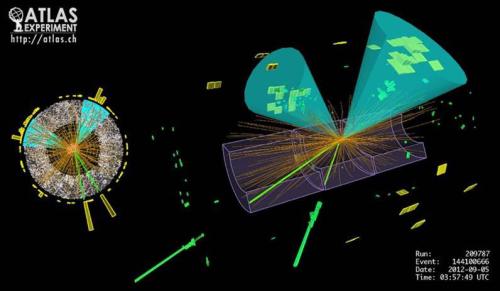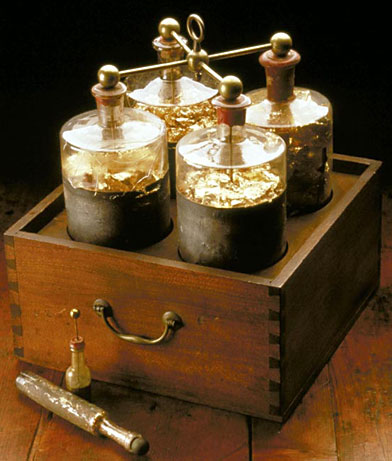Click on the link below to watch the video.
Video: Robotic Ants Solve Riddles Without Math - ScienceNOW
No dark corners
Have a dark corner but no room for an end table? Try a floor lamp. Rick Singleton, a lighting artist, thinks there are three good types of floor lamps. The first is a torchier on a dimmer. "You get the light that bounces off the ceiling and diffuses around the room," he says. The second is a multi-armed candelabrum with a shade. And the third is a pharmacy lamp, such as Restoration Hardware's 1900s Pharmacy Floor Lamp, good for reading ($249, restorationhardware.com).
A good chandelier is like a good necklace: Ready to transform any outfit or space into something a bit more special. Gale Singer, owner of Circa Lighting, says her company's Oslo Chandelier is a best-seller because of its glamorous crystal beads yet simple, traditional shape. She suggests hanging chandeliers 5 feet above the floor in dining rooms, unless the ceiling is especially high ($1,008, circalighting.com).
Classic for a reason
"I just so often think that things are overdone in the lighting category," says designer Frank Babb Randolph. For that reason, he overlooks trendier pieces for classics such as the Tizio Table Lamp, designed by Robert Sapper in 1972, best for task lighting in drawing rooms and home offices ($525, momastore.org).
For the bedroom, Randolph says a swing-arm lamp, such as the classic Hinson, is the go-to choice. "There's nothing like a swing-arm lamp in the bedroom because it gives you the proper lighting at the proper height," he says. Similar lamps can be found in many places, such as the Classic Swing Arm Lamp by Circa Lighting ($252, circalighting.com).
Another classic is the Anglepoise Lamp Original 1227 desk lamp. Designed by George Carwardine in 1932, it was rereleased last year by Anglepoise for its 75th anniversary ($250, rejuvenation.com).
Tips for your table
Choosing a table lamp can be trickier than choosing a bedside or task lamp, because there are so many choices. If you're overwhelmed, interior designer Zoe Feldman suggests a gourd, such as the Porcelain Table Lamp by Garnet Hill. "There's tons of different ceramic gourds that are all sorts of colors," she says, making it easy to find one that complements your color scheme. For shades for any type of lamp, Feldman recommends a basic white linen or paper shade in a drum shape ($231, garnethill.com).
"When done in pairs, table lamps can create a nice amount of symmetry," Feldman says. "Especially if you don't have matching end tables." For an edgy modern option, consider the Concrete Cube Mini Lamp by Regina-Andrew Design ($210, neimanmarcus.com).
How big should a table lamp be? When debating about size, Feldman says, "Err on the side of bigger rather than smaller." West Elm's Perch Table Lamp would be a good fit for a small end table ($69, westelm.com).
Lighting as art
Lighting can be classic and subtle, but it can also be the perfect finishing piece for a room in need of distinctive art. "Many times in the rooms that are going to be visible to guests, like a powder room or dining room, people will go a little bit over the top and choose statement pieces," says Circa Lighting's Singer.
The Large Wire Globe Lantern by the bloggers of Young House Love is a good eye-catching complement for traditional or modern homes ($89, shadesoflight.com).
For a really funky piece of lighting art, appropriate for a kitchen, rec room or even a teenager's room, try Vintage Marquee Lights, in letters or numbers ($229, vintagemarqueelights.com).
Consider the bulb
Though they're often concealed by shades, don't overlook bulbs: Retro bulbs such as West Elm's Edison are making a comeback just as manufacturers are pushing toward more energy-efficient options ($15, westelm.com).
"Keep in mind that these bulbs are more decorative," says Tina King of Rejuvenation home and lighting store. "They should be used for ambiance, not to light a kitchen where brighter light is needed for your work area." A tungsten bulb such as the 30W Radio-Style Small Tungsten Filament Bulb from Rejuvenation is another option for imitating the glow of candlelight ($10, rejuvenation.com).
If you're going to go with a retro bulb, make sure that your fixture shows it off, as does the glass bell shade on Crate and Barrel's Lander Sconce ($149, crateandbarrel.com).
 Energy saving is the activity of reducing
the amount of energy producing resources people use and deplete in the
daily course of their lives. There is a limited quantity of nonrenewable
energy resources on Earth, so it is essential to save the current
supply and use renewable sources that will be available in the future.
By making some behavioral changes, individuals and organizations can
decrease their consumption of heat and power to save energy.
Energy saving is the activity of reducing
the amount of energy producing resources people use and deplete in the
daily course of their lives. There is a limited quantity of nonrenewable
energy resources on Earth, so it is essential to save the current
supply and use renewable sources that will be available in the future.
By making some behavioral changes, individuals and organizations can
decrease their consumption of heat and power to save energy. Specific energy saving activities include, but are not limited to, using more efficient light bulbs; lowering heating system thermostats in the home and office; reducing the use of cars and other petroleum reliant vehicles; and reusing materials such as plastic bags and water bottles.







 This is a solar power rocket that I am going to make in the future to save energy.When I start making the rocket I will rap the rocket with solar power pad that looks like this
This is a solar power rocket that I am going to make in the future to save energy.When I start making the rocket I will rap the rocket with solar power pad that looks like this So that is how I am going to make my solar power rocket.
So that is how I am going to make my solar power rocket.





















